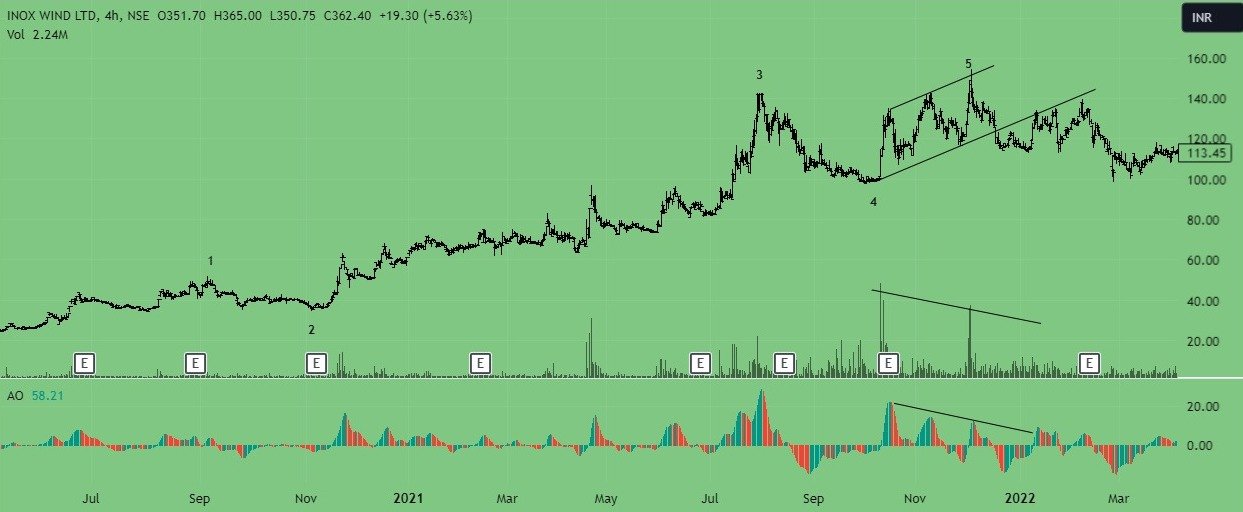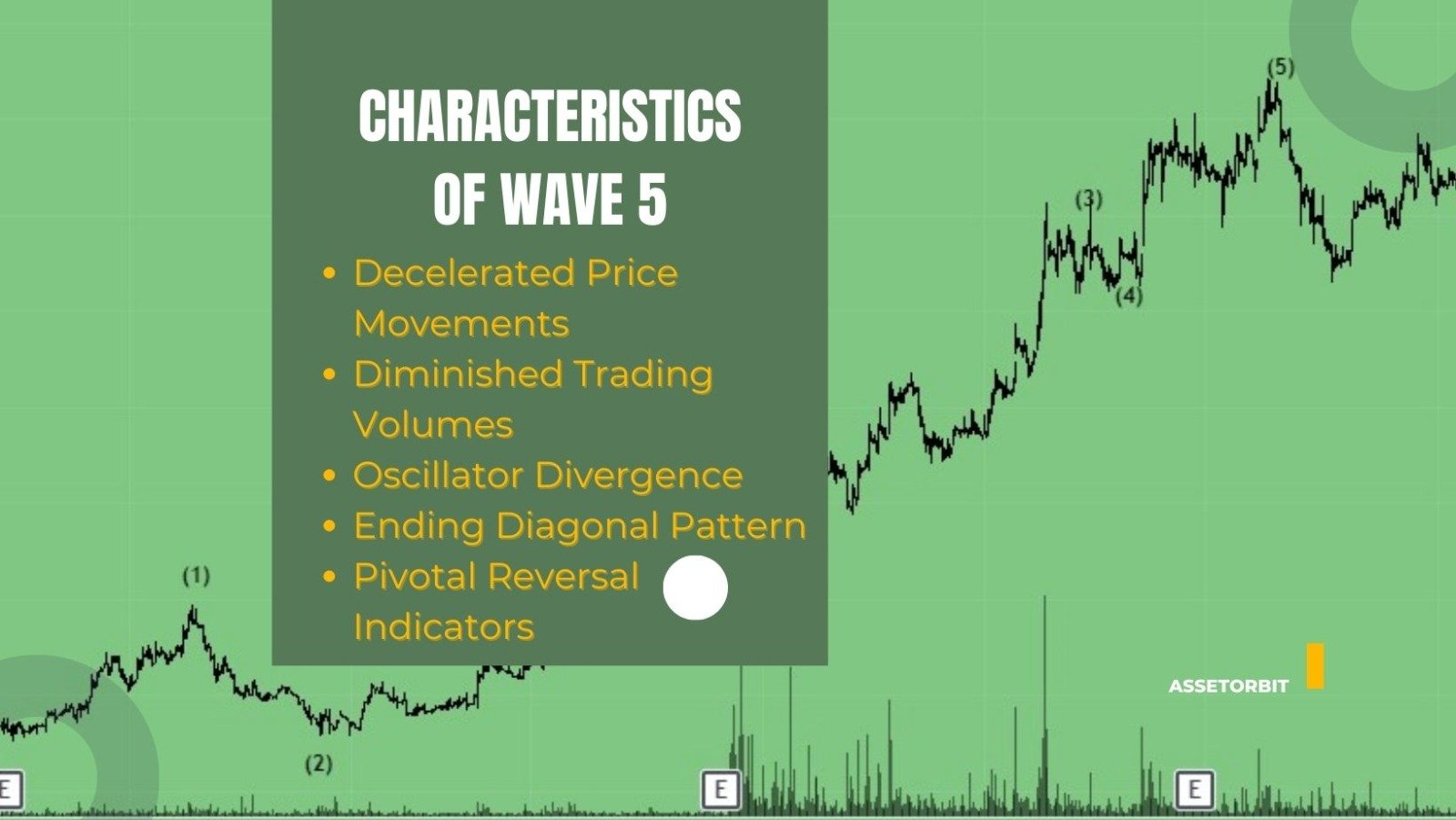A Proposed Elliott Wave Model Traders should closely observe Wave 5 to detect market reversals and possible profit opportunities. Less trading volume, slower price changes, divergences in oscillator readings, possible gaps or extensions, a clear ending pattern, significant reversal indications, and more are all revealed. It is common for a three-wave reversal wave to follow the fifth wave.
In Short
Many traders fail to grasp the important role that Wave 5 plays in Elliott Wave Theory. Wave 5 may not always offer the best profit opportunities, but you must accurately identify it to capitalize on the market reversal that follows.
Imagine yourself surfing the waves, and then suddenly you see Wave 5. The real magic begins now. With accurate Wave 5 identification, you may set yourself up for the subsequent giant reversal and avoid missing out on substantial profit potential.
Understanding the significance of Wave 5 identification is crucial. Firstly, Wave 5’s size might be misleadingly tiny at times, leading many traders to keep their positions open in the expectation of larger profits—only to wind up incurring losses. This makes it crucial to exercise extra caution and alertness during this period.
The extended Wave 5 is a tempting target for traders due to the large profit potential it offers. While Wave 5 may not always command attention, it consistently plays a crucial role in identifying market reversals and potential profit opportunities. When you know what to look for in Wave 5, you can confidently and predictably navigate the market.
What Is the 5th Wave in the Elliott Wave?
Elliott Wave Theory identifies the fifth wave as the final surge in the direction of the prevailing trend. It exhibits slower, more deliberate price movement and lower trading volumes compared to the third wave. Traders often observe oscillator divergence, signaling a potential weakening in momentum.
This deceleration prompts traders and investors to become vigilant, as the characteristics of the fifth wave make it a pivotal point for anticipating an impending market trend reversal.
Characteristics of Wave 5
If traders want to make money off of market movements, they need to know what Wave 5 is. Decelerated price movements and possible ending diagonal formations are characteristics of this wave, which marks a critical moment when market reversals are sure.
1. Decelerated Price Movements
Prices in Wave 5 move more slowly and deliberately than in Wave 3, which was more forceful. Wave 5 has a more steady ascent, suggesting fading energy as the trend nears its climax, in contrast to Wave 3’s fierce and quick surge. For traders, this slowdown is a key indicator of a possible market reversal soon.
2. Diminished Trading Volumes
Contrary to the increased activity seen in the third wave, trade volumes often fall during the fifth wave. The decrease in volume indicates a weakening momentum as fewer players push the price. With the market approaching its top, this decline in volume is a crucial sign of a possible market reversal.
3. Oscillator Divergence
If you compare the fifth wave to its dynamic antecedent, you may see signs of declining velocity through oscillator divergence. When oscillators such as the relative strength index (RSI) or moving average convergence divergence (MACD) separate from the price movement, the strength of a trend diminishes. A crucial indicator for traders, this divergence suggests that Wave 5 could be coming to a close.

4. Ending Diagonal Pattern
Investigate the possibility of a concluding diagonal pattern, which would add yet another layer of complexity to the Wave 5 traits. When this pattern, which is defined by merging trend lines, emerges at the end of a motive wave, it typically signifies the completion of the dominant trend. Key insights, such as the presence of an ending diagonal pattern, might indicate a probable reversal and present possibilities for strategic trading.
5. Pivotal Reversal Indicators
Investors and traders should closely monitor Wave 5, as it may exhibit an ending diagonal pattern, indicating a potential reversal in market trends. When the trend lines in this pattern begin to converge, it indicates that the current trend is losing momentum and a reversal is imminent.
6. Truncation and Extension
The fifth wave in an impulsive pattern may show signs of failure or truncation when it fails to reach the price extreme set by the third wave. On the other hand, it may exhibit unexpected strength (extension) and surpass the anticipated levels. Traders and analysts meticulously evaluate these possibilities, as they have distinct implications for market dynamics and potential reversals.
How to Predict Elliot Wave 5?
Elliott Wave 5 prediction involves technical analysis, pattern recognition, and Elliott Wave Theory principles, but interpretations can vary. The steps include understanding the theory.
1. Understand waves: Learn Elliott Wave Theory’s fundamentals, including impulsive and corrective waves, and understand their typical patterns and structures. Recognize the typical structures associated with each wave.
2. Identify waves 1 and 3: The Elliott Wave sequence starts with Wave 1, followed by Wave 3, and its length is measured to project potential targets for Wave 5, indicating the beginning of the trend.
3. Analyze Wave 3 characteristics: Examine Wave 3, the most powerful wave in the sequence, for momentum, high trading volumes, and strong bullish or bearish sentiment, indicating strong sentiment.
4. Expect corrective Wave 4: Expect a corrective wave (Wave 4) following Wave 3, which typically represents a retracement against the current trend.
5. Evaluate volume and oscillator divergence: Observe trading volumes during Wave 5 development, which may decrease compared to Wave 3. Use oscillators to detect potential divergence, indicating a weakening in momentum.
6. Look for ending diagonal patterns: Consider the probability of a Wave 5 ending diagonal pattern. This is a pattern in which the sub-waves have converging trendlines.
7. Check for patterns and signals: You should back up the Elliott Wave analysis by finding other technical patterns, trendlines, or support and resistance levels that match the expectations for Wave 5.
8. Use multiple timeframes: Analyze market trends over multiple timeframes to understand the unfolding waves and broad trends.
Elliott Wave analysis requires practice and experience, risk management strategies, and considering other analyses to validate predictions. Market conditions can be unpredictable, so adaptability and considering multiple factors are crucial in trading decisions.
What Happens After Wave 5?
After the fifth wave in an Elliott Wave motive phase, a reversal wave usually follows, consisting of three smaller waves called A, B, and C. The depth of the correction following wave 5 mirrors the previous wave.

The market is fractal, and the impulse pattern appears only in certain spots of the Elliott wave sequence. Knowing where an impulse wave may form and where it may not be found can help anticipate the depth of the subsequent correction and guide the level of aggression to pursue the anticipated wave. This information is crucial for successful trading in the Elliott Wave market.
5th Wave Elliott Wave Notes
- There is a tendency for at least one of the impulse waves to extend.
- Wave 5 is a suitable candidate for extension if the first and third waves are normal.
- If wave 1 had extended, wave 5 would likely be equal to wave 3.
- To predict wave 5’s extension, measure the distance from 0 to 3 and add 100% of the measure to the end of wave 4. This is the most likely target for wave 5. However, wave 5 can sometimes cover 161.8% of the distance from 0 to 3.
Final Thoughts
Elliott Wave Theory’s Wave 5 shows a complex market with slower price changes, lower trading volumes, and the possibility of an ‘ending diagonal’ pattern. Analysis of oscillator divergences can reveal market momentum shifts. Traders and investors use Wave 5 to predict reversals and navigate financial markets.
Disclaimer
This article is provided for informational purposes only and does not offer financial advice. Trading and investing involve risk, and past performance is not a guarantee of future outcomes. Before making investment decisions, readers should conduct their own research and consider their individual circumstances. The author and platform are not responsible for any financial losses or damages resulting from the use of this information. Get personalized advice from a trained financial counselor.













Leave a Reply